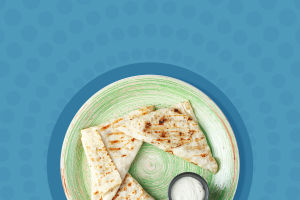When it comes to desserts, it is difficult for many people to resist its temptation. Sweet and delicious desserts, who don't love? However, how much do you know about dessert? How exactly was it invented and widely circulated? Today, let's talk about the history of dessert you don't know.
Before the seventeenth century, there was no white sugar in the world. At that time, only fruits and maltose can really be called sweets. It was not until the seventeenth century that after the sucrose industry rose, humans began to eat sweets on a large scale.
The dessert we love first originated from Europe. In the fourth century BC, the earliest sweetener used in food in ancient Greece was honey, and honey cake once popular in Europe. The ancient Greeks made a pancake with flour, oil, and honey, and desserts have since become the favorite food of the Greeks.
Since then, desserts have continued to upgrade and improve in European countries such as Britain, France, Germany, Spain. Later, desserts with characteristics of localities appeared. For example: Brownni cakes in the United States, Mousse in France, German chocolate cake.
Of course, in the past, desserts were exclusive to royal nobles, and ordinary civilians were not qualified to enjoy. In addition, because the dessert production process is complicated, more materials are required, and more time and money are consumed, it is difficult to enter the public's life. The most important thing is that the shelf life of desserts is very short and requires a strict preservation environment. Therefore, in terms of manufacturing and preservation, desserts are a luxury product in the past, and it is difficult for ordinary people to enjoy.
From the 17th century to the end of the eighteenth century, the popular sugar was widely used after the popularity, helping the chefs invented a lot of new food. After the nineteenth century, the popularization of the sugar industry and the popularization of sugar consumption made desserts enter the lives of ordinary people.
With the progress of society, today's desserts have become one of our favorite foods. In addition, with the advancement of dessert craftsmanship, there are hundreds of species of desserts we see. In addition to traditional bread and cakes, various new macarons, paper cups, sugar water and milk tea have become everyone's favorite desserts. It can be said that desserts have not changed since ancient times.
Here are the representative desserts of the two countries.
United States: Browni cake
Brony is also known as Walnut Browni cake. Brony originated in the United States at the end of the 19th century and was popular in the United States and Canada in the first half of the 20th century. The difference between Browni cake and ordinary cake is that its cake is stronger, not as loose as ordinary cakes. Almonds or walnuts will be decorated and seasoned on it. The taste is usually sweeter.
France: Mousse cake
Mousse cake first originated from the gourmet capital -Paris, France. Its appearance, color, and taste are very rich. Its emergence meets people's life concepts and meets people's new requirements for cakes. The mousse cake also gives dessert chefs a larger creative space. They show their inner life understanding and artistic inspiration through the production of mousse cakes.


